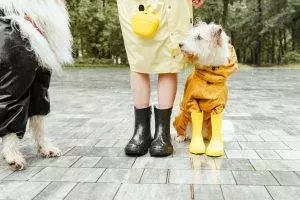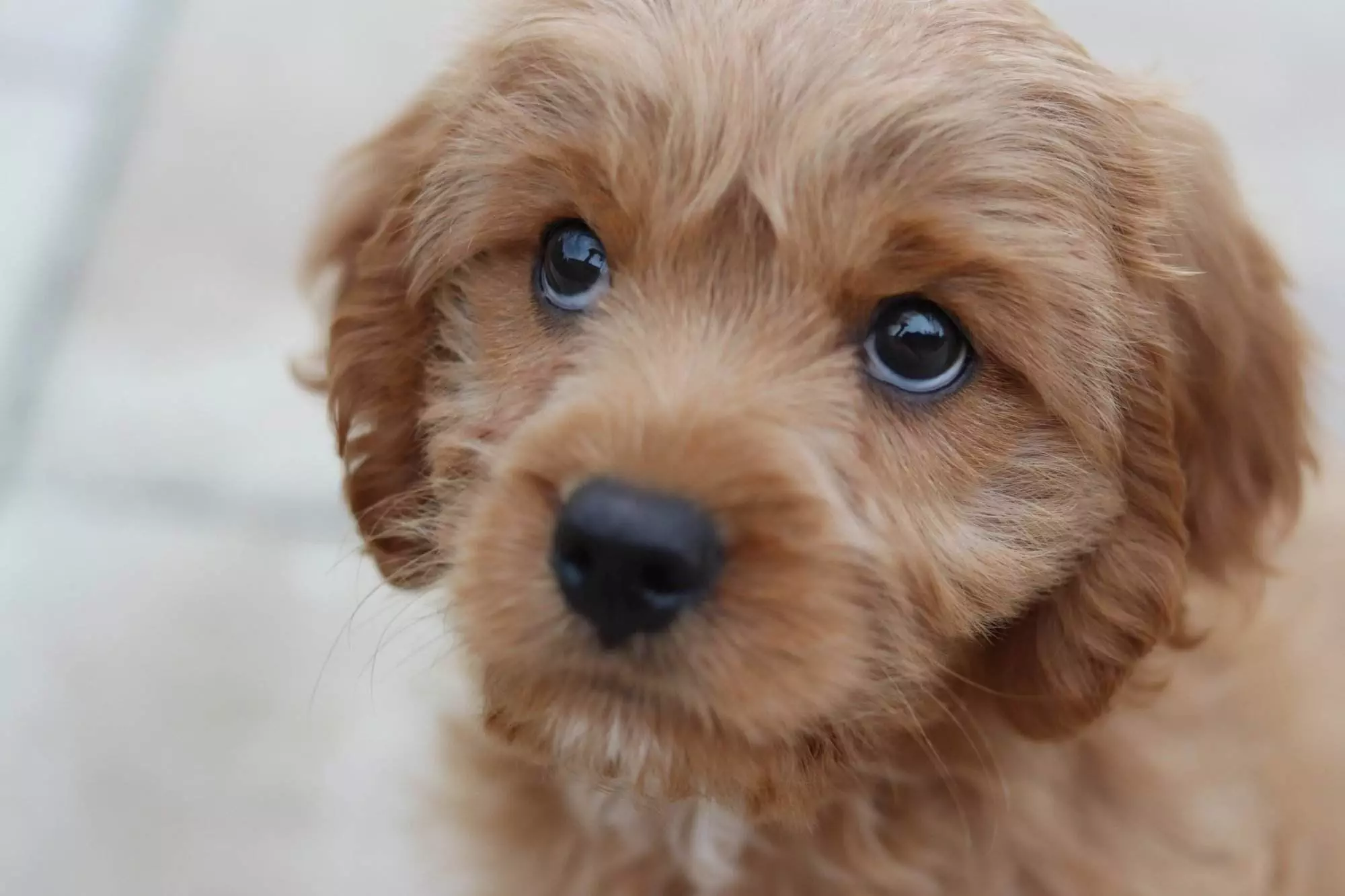Learn effective techniques to train your puppy to come when called. Establish a strong bond, understand their behavior, and use positive reinforcement. Prepare with a suitable training environment and gather rewards. Teach them basic commands like sit, stay, and come. Use progressive training techniques, positive reinforcement, and avoid common mistakes. Deal with challenges like distractions and fear. Progress to off-leash training in a safe area. Start training your puppy today!
Imagine the joy of having a well-trained puppy that comes to you every time you call its name. With a little patience and consistency, you can teach your furry companion the essential skill of coming when called. In this article, we will explore effective techniques to train your puppy, ensuring a strong and reliable recall response. From establishing a positive association to utilizing rewards and distractions, we will provide you with practical tips and guidance to help you achieve success in this fundamental aspect of puppy training. So, get ready to embark on an exciting journey of training your puppy to come when called!

Establishing a Bond with Your Puppy
Spend Quality Time Together
To establish a strong bond with your puppy, it is important to spend quality time together. Take the time to play, snuggle, and interact with your pup. This will not only create a sense of trust and companionship but also strengthen the bond between you and your furry friend.
Provide Positive Reinforcement
Positive reinforcement plays a crucial role in building a bond with your puppy. Whenever your pup displays good behavior, be sure to reward them with praise, treats, or both. This will teach your puppy that good behavior is associated with positive outcomes and will encourage them to repeat those actions in the future.
Use Your Puppy’s Name with Positive Associations
Using your puppy’s name positively is an effective way to establish a bond. You can achieve this by associating their name with rewards, treats, or playtime. When you call your puppy’s name, make sure it is always in a friendly and upbeat tone. This will create a positive association with their name and make them more responsive when called.
Understanding Your Puppy’s Behavior
The Natural Instinct to Follow
Puppies have a natural instinct to follow their owners. This instinct stems from their pack mentality, where they seek guidance and security from their pack leader. Understanding and harnessing this instinct is essential in training your puppy to come when called. By utilizing their inherent desire to follow, you can encourage them to come to you even in challenging situations.
The Importance of Early Training
Early training is crucial in shaping your puppy’s behavior. The first few months of a puppy’s life are a vital window for learning and socialization. By starting training early, you can establish a foundation of good behavior and set your pup up for success in the future. Teaching your puppy to come when called is one of the most important commands you can teach them, as it ensures their safety and allows for off-leash freedom when appropriate.
Factors Affecting Response to Recall Commands
Various factors can affect your puppy’s response to recall commands. These include their age, breed, temperament, and previous experiences. Understanding these factors will help you tailor your training techniques to meet your puppy’s individual needs. Some puppies may be more eager to please, while others may require more patience and consistency. By considering these factors, you can adapt your training methods and increase your chances of success.
Preparing for Training
Choose a Suitable Training Environment
When training your puppy to come when called, it is essential to choose a suitable training environment. Start with a quiet and familiar space, such as your backyard or a controlled indoor area, where distractions are minimal. This will allow your puppy to focus on learning the command without being overwhelmed by external stimuli. As your training progresses, gradually introduce more distractions to test your pup’s response in different environments.
Gather Rewards and Treats
Rewards and treats are powerful tools in training your puppy. Before starting the training session, gather a variety of tasty treats that your pup loves. These treats will serve as positive reinforcement for your puppy’s correct response to the recall command. It is important to choose treats that are small, soft, and easily consumable, as they can be quickly ingested, motivating your pup to respond promptly.
Have a Leash and a Long Line for Safety
In the early stages of recall training, it is crucial to have a leash and a long line for your pup’s safety. Attach the leash or long line to your puppy’s harness or collar, allowing you to maintain control and prevent them from running off. As your pup becomes more reliable with their recall, you can progressively reduce reliance on the leash and long line, allowing for more off-leash freedom.
Teaching the Basics
Teach the ‘Sit’ Command
Teaching your puppy the “sit” command is a fundamental building block for recall training. Start by holding a treat close to your pup’s nose and slowly move it upwards, causing their head to follow the treat and their bottom to lower to the ground naturally. As their bottom touches the ground, say “sit” and reward them with the treat. Repeat this process, gradually adding the verbal cue before the physical action, until your pup understands and reliably responds to the “sit” command.
Teach the ‘Stay’ Command
The “stay” command is important for recall training as it reinforces impulse control and self-restraint. To teach your puppy to stay, start by having them in a sitting position. Show your open palm towards them, say “stay,” and take a step back. If they remain in the sitting position, return to them and reward them with treats and praise. Gradually increase the time and distance as your puppy becomes more proficient in staying.
Teach the ‘Come’ Command
Teaching your puppy to come when called is a vital command for their safety and well-being. To start, ensure that you are in a secure and distraction-free environment. Squat down, open your arms, and use an enthusiastic voice to call your puppy’s name followed by the word “come.” When they approach you, reward them with treats and praise. Repeat this process, gradually increasing the distance between you and your pup. Make the training sessions short and frequent to keep your puppy engaged and motivated.
Using Progressive Training Techniques
Start Indoors with Minimal Distractions
When introducing recall training, start indoors with minimal distractions. This controlled environment allows your puppy to focus on learning the command without the temptation of external stimuli. Begin by practicing the recall command in a quiet room, gradually increasing the distance between you and your pup. As your puppy becomes more confident and consistent, you can add subtle distractions, such as toys or low-level background noise, to simulate real-life scenarios.
Progress to Controlled Environments
As your puppy gains proficiency in recalling in low-distraction environments, it is important to progress to controlled environments with moderate distractions. This could be your backyard or a nearby park where there are other dogs or people present. Adding controlled distractions helps your puppy generalize the command and respond reliably even when there are competing stimuli. Remember to reward and praise your pup for every successful recall!
Practice in Different Settings and Distractions
To ensure a reliable recall, it is crucial to practice the command in various settings and distractions. Expose your puppy to different environments, such as busy streets, dog parks, or hiking trails, to reinforce their recall abilities. Gradually increase the level of distractions while maintaining their focus on you. This will help your puppy understand that regardless of the surroundings, coming to you when called is always the right behavior.
Positive Reinforcement Techniques
Reward with Treats and Praise
Rewarding your puppy with treats and praise is a powerful positive reinforcement technique. Whenever your puppy successfully responds to the recall command, immediately provide them with a treat and verbal praise. This positive association will motivate them to repeat the desired behavior. It is important to deliver the reward promptly and consistently to ensure your puppy understands what is being rewarded.
Use Clicker Training
Clicker training is another effective positive reinforcement technique for recall training. Start by associating the clicker sound with treats. Click the device and immediately follow it with a treat. Repeat this process until your puppy understands that the clicker sound predicts a reward. Once they have made this connection, use the clicker to mark the desired behavior when they come to you after being called. Follow the click with a treat and enthusiastic praise.
Consistency and Timing are Key
Consistency and timing are crucial when using positive reinforcement techniques. Always provide rewards immediately after your puppy correctly responds to the recall command. This ensures that they associate the reward with the desired behavior. Consistency is also important in using the same verbal cues, hand signals, and rewards throughout the training process. By being consistent and timely, you will reinforce the behavior you want and increase the likelihood of your puppy consistently responding to the recall command.
Avoiding Common Mistakes
Never Punish Your Puppy for Not Coming
It is important to never punish your puppy for not coming when called. Using punishment can instill fear and confusion, damaging the bond you have worked so hard to establish. Instead, remain patient and assess the training method you are using. Reinforce the recall command with positive associations and adjust your training techniques if necessary. Remember, your puppy’s understanding and response to recall will improve with consistent and positive reinforcement.
Avoid Using the Recall Command for Negative Experiences
It is crucial to avoid using the recall command in association with negative experiences. If your puppy associates coming to you with unpleasant situations, they may become hesitant or reluctant to respond. Always make sure that recall is associated with positive outcomes, such as treats, playtime, or praise. By maintaining a positive association, your puppy will eagerly respond to the recall command without hesitation.
Don’t Overuse the Recall Command
Overusing the recall command can diminish its effectiveness. If your puppy hears the command too frequently, it may become desensitized to its importance and only respond when it deems necessary. Instead, use the recall command selectively, especially in situations where their safety is involved. By keeping the recall command valuable and meaningful, your puppy will understand the importance of coming when called.
Dealing with Common Challenges
Puppy Distractions and Short Attention Spans
Puppies are naturally curious and have short attention spans. They can easily become distracted, especially in new or stimulating environments. When faced with distractions, it’s important to redirect your puppy’s attention back to you. Use high-value treats or toys to regain their focus and reinforce the recall command. Gradually increase the level of distractions as your puppy becomes more adept at ignoring them and responding to your call.
Fear and Anxiety Issues
Fear and anxiety can pose challenges to recall training. It is important to create a positive and safe training environment to help your puppy overcome these challenges. Gradually expose your pup to fearful stimuli, such as unfamiliar sounds or objects, in a controlled and supportive manner. Patience and gentle encouragement are key when dealing with fear or anxiety. Seek guidance from a professional trainer if your puppy’s fear or anxiety issues persist.
Reinforcing the Recall Command
To reinforce the recall command, incorporate it into everyday activities and interactions with your puppy. Use the recall command before feeding them, going for a walk, or engaging in playtime. This will reinforce the idea that coming when called is an integral part of their routine and always leads to positive experiences. By consistently practicing the recall command, you will ensure that it remains ingrained in your puppy’s behavior.
Progressing to Off-Leash Training
Use a Safe and Secure Area
When progressing to off-leash training, it is crucial to choose a safe and secure area. This could be a fenced backyard, a designated off-leash dog park, or a securely enclosed training field. Ensure that the area is free from potential hazards and escape routes. Off-leash training should only be practiced in areas where you have legal permission and can safely control your puppy’s behavior.
Gradually Increase Distance and Duration
As your puppy becomes more reliable with their recall on-leash, you can begin to increase the distance and duration of their off-leash training. Start by allowing them to explore a small area in off-leash sessions, gradually expanding the distance between you and your pup. Practice recalls from varying distances to reinforce their response and gradually increase the amount of time they spend off-leash.
Practice the Command in Unfamiliar Environments
To ensure a reliable recall, practice the command in unfamiliar environments. This will challenge your pup’s ability to respond to the recall command despite distractions and novel stimuli. Take your puppy to different parks, hiking trails, or even busy city streets to help them generalize the recall command. Remember to maintain a positive and rewarding atmosphere, even in unfamiliar surroundings, to reinforce their response.
Maintaining a Reliable Recall
Regular Reinforcement and Practice
Maintaining a reliable recall requires regular reinforcement and practice. Continue to reinforce the recall command by rewarding your puppy for their successful response. Practice the recall command in various settings and distractions to ensure it remains solid. Regular training sessions, even if they are short, will help keep your puppy’s recall skills sharp and fresh in their mind.
Varying Rewards and Reinforcement
To maintain your puppy’s enthusiasm for the recall command, vary the rewards and reinforcement they receive. Use a mix of high-value treats, praise, and playtime to keep them engaged and motivated. Occasionally surprise your pup with extra special rewards, such as their favorite toy or a longer play session. By providing varied rewards and reinforcement, you will ensure that your puppy remains eager to respond to the recall command.
Continued Positive Association with Recall
Throughout your puppy’s life, it is crucial to maintain a positive association with the recall command. Make it a habit to reinforce the command positively in everyday interactions. Regularly reward your puppy for coming when called, even if it’s just for routine activities. By continually reinforcing the recall command in a positive manner, you will ensure a lifelong reliable response from your furry friend.
Remember, training your puppy to come when called takes time, patience, and consistency. Be consistent with your training methods, show them love and encouragement, and always make it a positive experience. With a strong bond and the right training techniques, your puppy will become a reliable and well-behaved companion who will always come when called.





